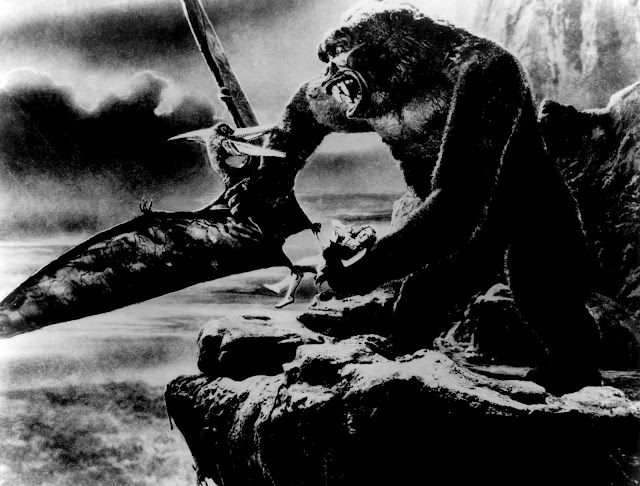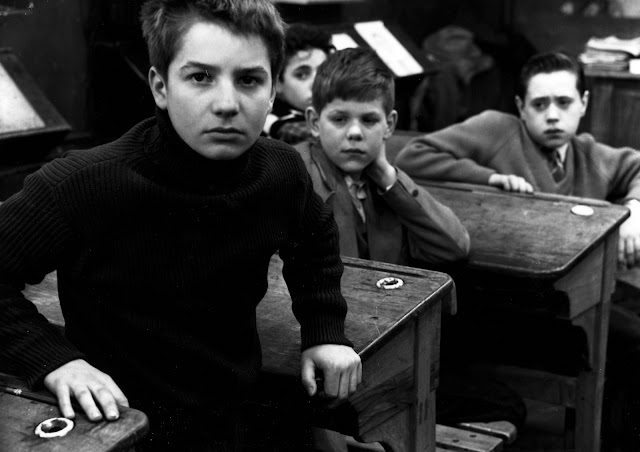Napoleon (1927)
Abel Gance's "Napoleon"
In 1927, Abel Gance released his most ambitious project yet. It's scale and filmmaking range were as epic and grand as its subject matter. The film, "Napoleon," centers on the Napoleon Bonaparte, the famous French military commander and emperor. The film was originally planned as being the first film in a series of six films dedicated to the titular French hero. However, because the costs of making the first film were so enormous, Gance realized that he could not accomplish his full, grand vision.
Because the film is the first of a planned six films, it only centers on a portion of Napoleon's life. It begins with Napoleon as a child in military school. His obvious military-like strategies during a snowball fight foreshadow who he will become. When he becomes a young army lieutenant, he witnesses the French Revolution and remarks on the unnecessary bloodshed. He flees the chaos and makes his way back to his home island of Corsica. There, political tensions were at an all-time high as a divide between Italian and British rule was debated. He flees his home, fearing the factions would become violent. Back in France, he serves as an officer in the Siege of Toulon. After showcasing his leadership and strategic mind for battle, he is promoted to brigadier general. He is then imprisoned by revolutionaries. Leaving prison, he forms a plan to invade Italy. After marrying his new love Josephine, he is awarded the rank of Commander-in-Chief of the Army of the Interior. He is put in control of the French-Italian border, where he pushes his troops into Italy to invade.
To match the ambition and grandiosity of its subject matter, Gance too becomes grand and ambitious in his filmmaking. At the time in 1927, various styles of filmmaking were sweeping the world. In America, the 'epic' was popularized by the works of D.W. Griffith. In the Soviet Union, Sergei Eisenstein had revolutionized cinema with his montage films. In Germany, creative expression had reached a pinnacle with Expressionist filmmakers. With "Napoleon," Gance had fused all methods of filmmaking into one, kaleidoscopic style. As Napoleon plans to unite Europe under one new order, Gance unites filmmaking under one new style - one that incorporates all the styles into a grand, singular vision of varied expression. One element that Gance took and expanded was the use of a fluid camera. Taking the camera off its axis and allowing it to be fluid was a concept first utilized in F.W. Murnau's 1924 film "The Last Laugh." Gance goes one step further than Murnau by unchaining the camera in every sense of the word. Not only does the camera travel on an axis, but the camera also becomes handheld, as well. The first instance of this is during the snowball fight sequence at the beginning of the film. While most shots in a film are static, Gance employs and unsteady camera to capture the frenetic energy of a scene. In fact, pretty much all of Gance's filmmaking techniques are incredibly innovative. For example, Gance uses fast cutting to instill a frenzied emotional element to a scene, particularly battle sequences. He uses extensive close-ups to acquire a greater emotional resonance for any scene. This focus on close-ups would be blown out of the water by Carl Theodor Dreyer in the following year with "The Passion of Joan of Arc." Gance uses location shooting to really capture an authentic environment for his characters. There are many points of view shot in the film, allowing viewers to engrain themselves in characters' perspective, taken to a literal meaning. Gance uses superimposition, especially in the scene in which the ghosts of the revolution appear to Napoleon in the National Assembly Hall. There is an instance in which Gance is able to capture an underwater shot. Much of the film is also color tinted, each instance of color changing between the typical black and white, red, and blue. The varying colors are meant to co-align with the colors of the French flag. However, perhaps the most breathtaking of these innovative techniques was the invention of the widescreen format. In the final scene of the film, Napoleon is leading his vast army into Italian territory. Suddenly, the film opens up two additional screens, making three. Thus, the panoramic shot and the widescreen format are born. To achieve this, Gance filmed sequences using three cameras. In editing, he stitched the three images together. In the theater, two additional screens needed to be added to accompany the additional images. So, when the audience were seated in their seats, the film would literally open up to demonstrate a grand, wide panoramic shot three screens large. This incredible feat had not yet been accomplished in cinema and would not be touched in the same way again.
The filmmaking techniques were as big and bold as Napoleon himself and made the film a part of history. However, many were skeptical about the film's thematic place in the contemporary French climate. The film itself takes on an incredibly nationalist perspective. However, many believe that this nationalism spills over into the realm of fascism. The reason for this perspective on the film comes from some of the film's thematic points. In the film, the reason for many of Napoleon's triumphs comes from implementing stability in place of a chaotic, free society. After the fallouts of the French Revolution, the weak governmental body was not able to maintain order. As Napoleon rose in the ranks of the French military, he began to establish more and more order, specifically under his singular guidance. This historical interpretation of Napoleon seems to run parallel to the current European climate. After the fall of many European aristocracies in the first World War, much of Europe was in a state of governmental uncertainty. Many viewed the film as being a call to fascism in order to establish greater order amongst a newly 'free' people. Many French critics at the time compared the Napoleon figure in the film to Benito Mussolini. By 1922, Mussolini had taken over as prime minister of Italy and established a fascist regime. Many believed that Gance was instilling a pro-fascist, pro-Mussolini message into the film. It is unclear whether Gance recounted these claims. However, throughout the years, many do not take this idea from the film and merely see the film as a historical epic depicting a gargantuan French figure.
"Napoleon," despite being long in its 5- and 1/2-hour runtime, is not primarily known for its story or entertainment value. Rather, it is often recognized as a breathtaking piece of technical achievement. The varied filmmaking styles Gance employed have not been matched or duplicated. In fact, many believed the film to be lost until it was recovered in the 1950s, where it had an artistic revival. In fact, it had such an artistic re-evaluation, that it helped inspire the French New Wave movement. The French New Wave movement is often credited as re-evaluating the very style and technique of filmmaking. Its enormous innovations are often attributed to the gusto and gravitas of filmmaking exploration that Gance employs in his enormous achievement. "Napoleon" will forever be in the halls of film lore for its mighty assertation of filmmaking prowess.





Comments
Post a Comment